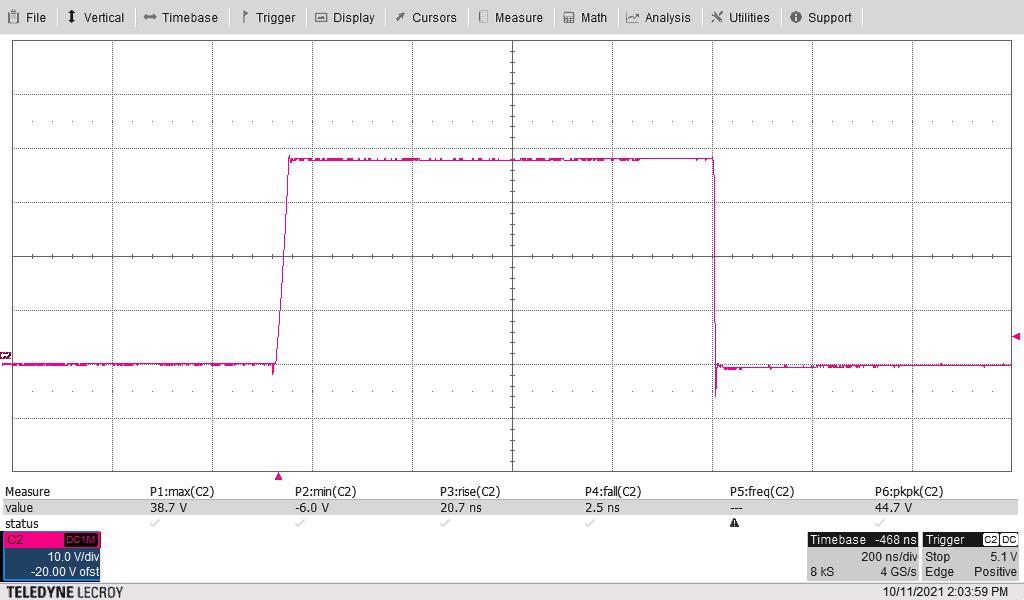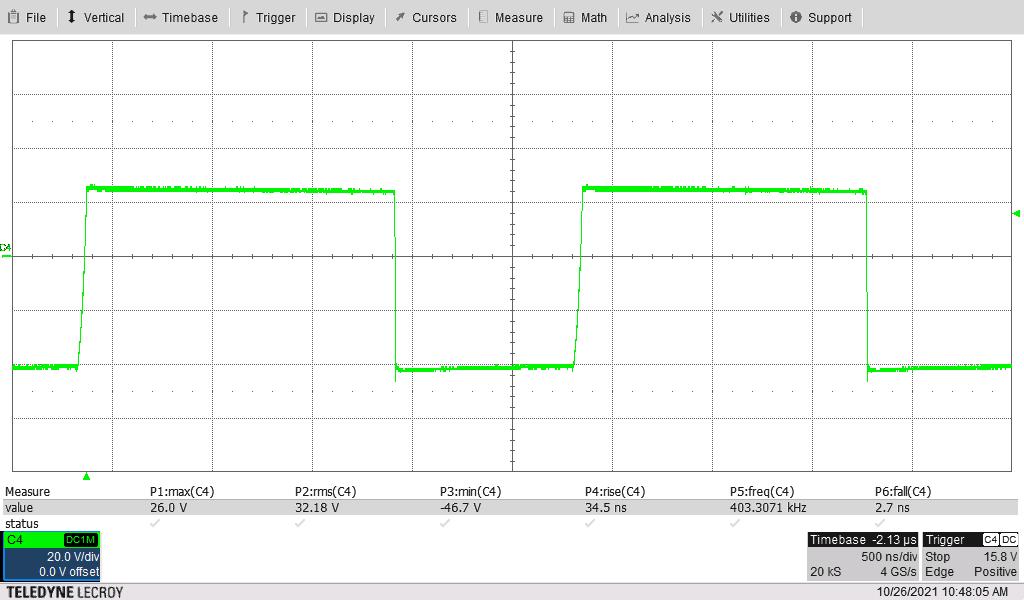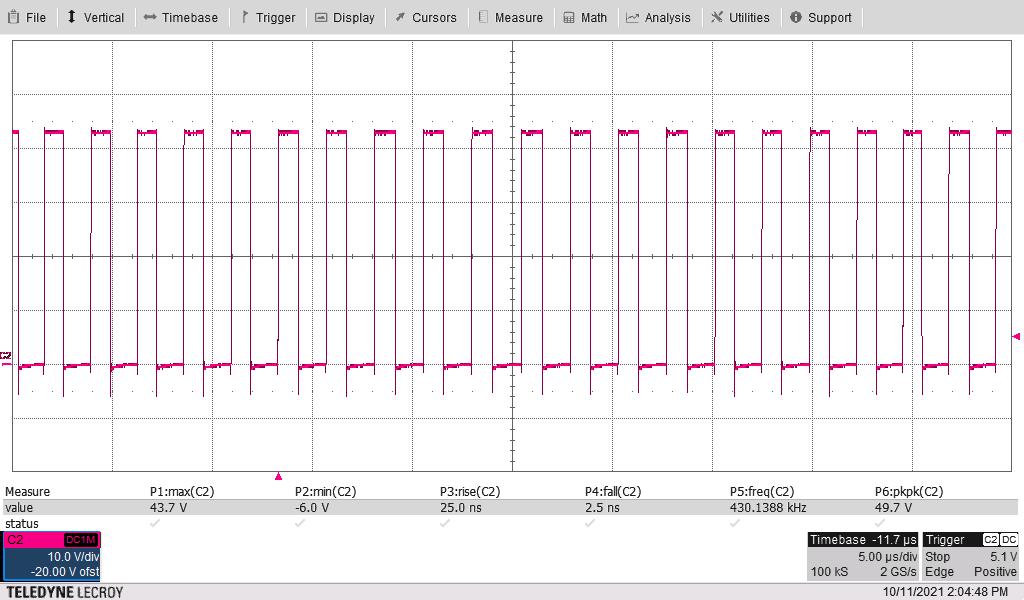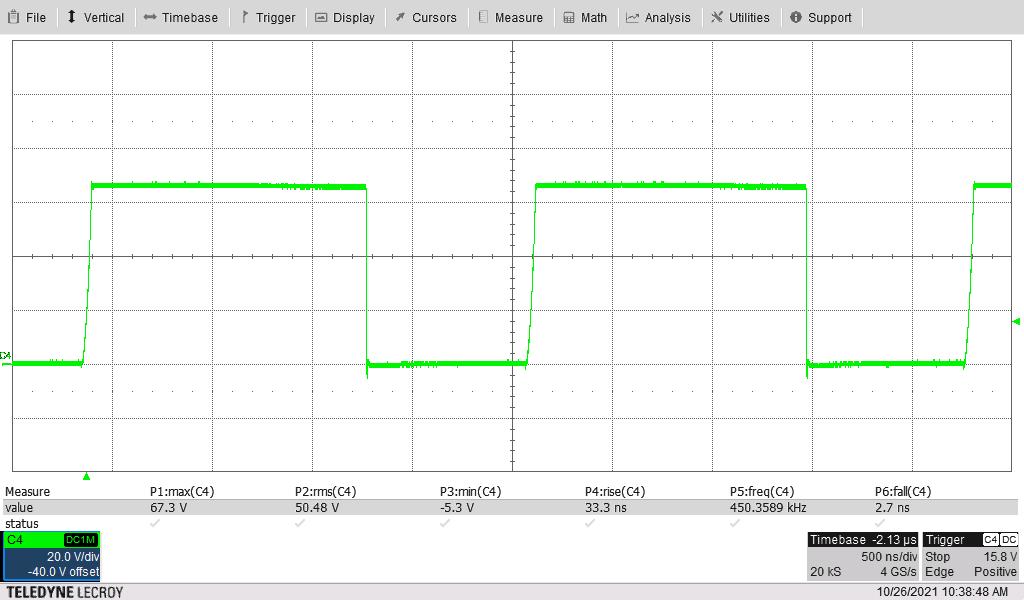TIDT256A March 2022 – March 2022
3.1 SEPIC Switching
Switching behavior is shown in the following figures.
 Figure 3-1 Switching at 18-VIN Q1 Drain Full Load at 445 kHz Showing Only 1 Pulse
Figure 3-1 Switching at 18-VIN Q1 Drain Full Load at 445 kHz Showing Only 1 Pulse Figure 3-3 Switching at 42-VIN D1 Anode Full Load at 445 kHz Showing 2 Cycles
Figure 3-3 Switching at 42-VIN D1 Anode Full Load at 445 kHz Showing 2 Cycles Figure 3-2 Switching at 18-VIN Q1 Drain Full Load at 445 kHz Showing 22 Cycles
Figure 3-2 Switching at 18-VIN Q1 Drain Full Load at 445 kHz Showing 22 Cycles Figure 3-4 Switching 42-VIN Q1 Drain Full Load at 445 kHz Showing Two Cycles
Figure 3-4 Switching 42-VIN Q1 Drain Full Load at 445 kHz Showing Two Cycles